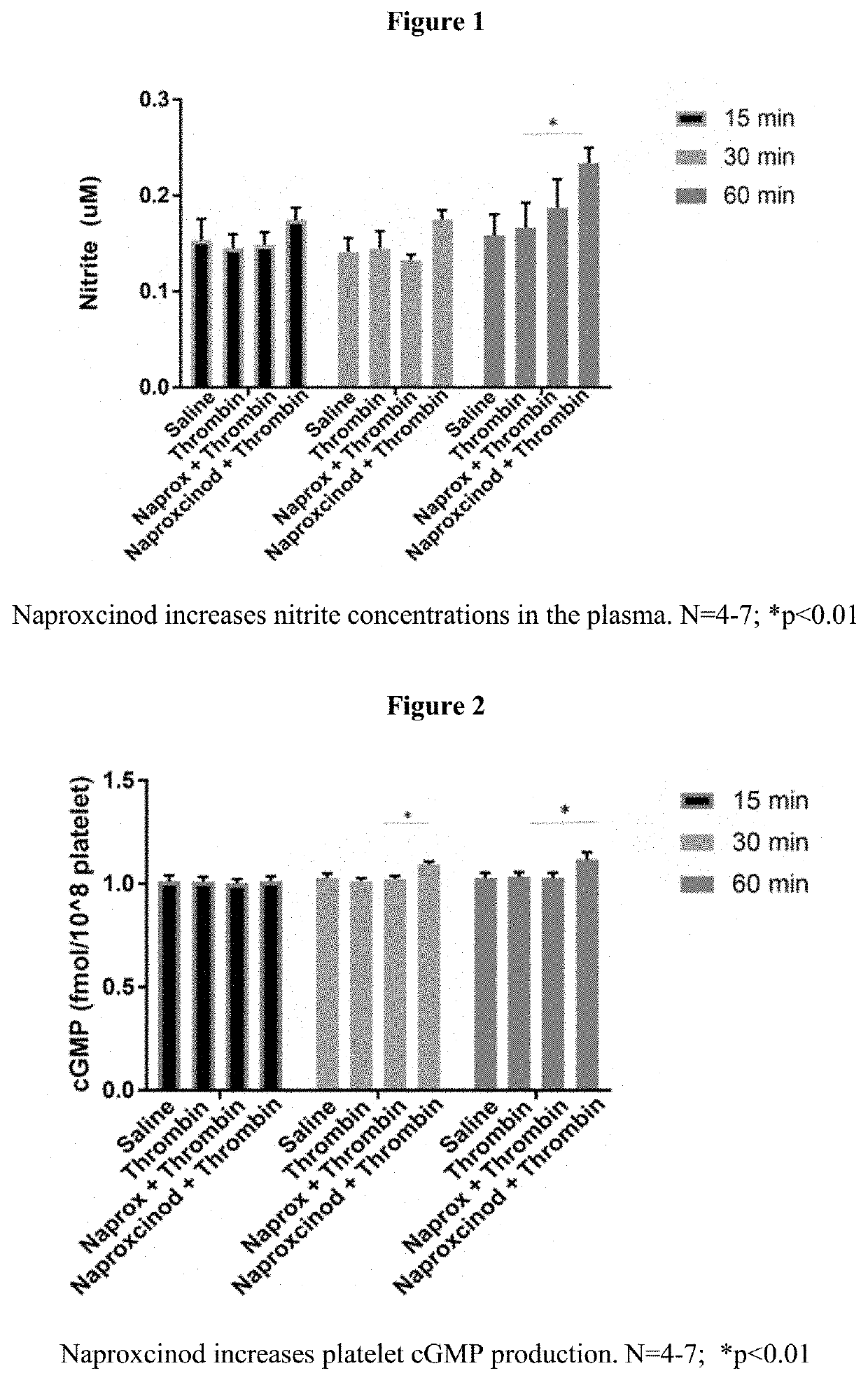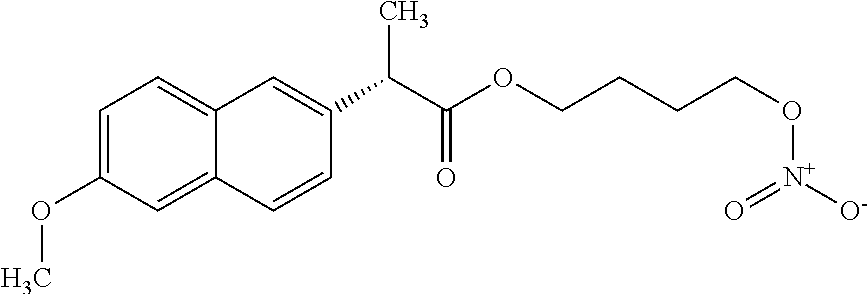Method for treating vaso occlusive crises associated with sickle cell disease
a vasoocclusive crisis and sickle cell disease technology, applied in the field of vasoocclusive crisis treatment of sickle cell disease, can solve the problems of patients grunting, groaning, cries, twisting and turning, and assuming abnormal postures, and reducing the pain associated with vo
- Summary
- Abstract
- Description
- Claims
- Application Information
AI Technical Summary
Benefits of technology
Problems solved by technology
Method used
Image
Examples
example 1
Effect of 4-(nitrooxy)butyl-(2S)-2-(6-methoxy-2-naphthyl) propanoate (naproxcinod) on Nitric Oxide Blood and cGMP Levels in Sickle Cell Mouse Model
[0060]This trial was conducted to assess the efficacy of 4-(nitrooxy)butyl-(2S)-2-(6-methoxy-2-naphthyl) propanoate (naproxcinod) to increase Nitrite (a precursor to NO), and cGMP in Homozygous Townes Sickle Cell transgenic mice.
Experimental Design
[0061]Homozygous Sickle Cell transgenic mice were treated with either 4-(nitrooxy)butyl-(2S)-2-(6-methoxy-2-naphthyl) propanoate (naproxcinod) (15 mg / kg) or naproxen (15 mg / kg—as a control) or saline (as a vehicle control) by intravenous injection. After one hour, the mice were injected with thrombin (1 u / 20 g) to induce platelet activation. Blood was drawn at 15, 30 and 1 hour after thrombin administration. Plasma nitrite levels were measured as a marker of nitric oxide bioavailability. cGMP levels were measured after addition of IBMX (3-Isobutyl-1-methylxanthine) (100 uM) to prevent cGMP degra...
PUM
| Property | Measurement | Unit |
|---|---|---|
| Time | aaaaa | aaaaa |
| Length | aaaaa | aaaaa |
| Cell angle | aaaaa | aaaaa |
Abstract
Description
Claims
Application Information
 Login to View More
Login to View More - R&D
- Intellectual Property
- Life Sciences
- Materials
- Tech Scout
- Unparalleled Data Quality
- Higher Quality Content
- 60% Fewer Hallucinations
Browse by: Latest US Patents, China's latest patents, Technical Efficacy Thesaurus, Application Domain, Technology Topic, Popular Technical Reports.
© 2025 PatSnap. All rights reserved.Legal|Privacy policy|Modern Slavery Act Transparency Statement|Sitemap|About US| Contact US: help@patsnap.com


